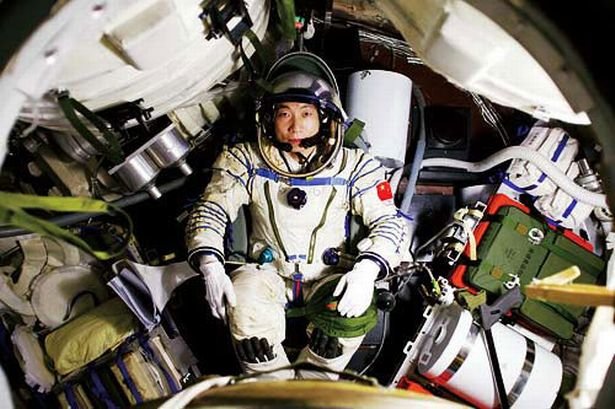
© China.org.cn
Astronauts living and working in space will experience the detrimental effects of microgravity on the human body. Astronauts aboard the International Space Station, for example, have experienced altered vision and increased pressure inside their heads, symptoms termed as visual impairment intracranial pressure (VIIP) syndrome.
VIIP syndrome is thought to be related to the redistribution of body fluid toward the head during long-term microgravity exposure, but the exact cause is unknown. To investigate the impact of microgravity on the human brain, neuroradiologist
Donna Roberts, from the
Medical University of South Carolina, has used MRI to investigate the anatomy of the brain following space flight (
N. Engl. J. Med. 377 1746).
"Exposure to the space environment has permanent effects on humans that we simply do not understand," said Roberts. "What astronauts experience in space must be mitigated to produce safer space travel for the public."
Roberts previously conducted a study examining the brains of participants who stayed in bed for 90 days, with their heads tilted downwards to simulate the effects of microgravity. Using functional MRI, she evaluated brain neuroplasticity, studying the brain's motor cortex before, during and after long-term bed rest. Results confirmed neuroplasticity in the brain occurred during bed rest, which correlated with functional outcomes of the subjects.
In this latest study, Roberts and her team acquired brain MRI scans and related data from NASA's
Lifetime Surveillance of Astronaut Health programme for two groups of astronauts: 18 who had been in space for short periods of time aboard the US Space Shuttle (mean flight time, 13.6 days); and 16 who had been in space for longer on the International Space Station (mean flight time, 164.8 days).
The researchers compared brain images of the two groups, evaluating the cerebrospinal fluid (CSF) spaces at the top of the brain and CSF-filled structures, called ventricles, at the centre of the brain. They also generated paired pre- and post-flight MRI cine clips from 12 astronauts after long-duration flights and six after short-duration flights, and looked for any narrowing of CSF spaces and displacement in brain structures.
They observed narrowing of the brain's central sulcus, a groove in the cortex near the top of the brain, in 94% of astronauts on long-duration flights and 18.8% of those on short-duration flights. The cine clips revealed an upward shift of the brain and narrowing of CSF spaces at the top of the brain among all the long-duration, but not the short-duration, astronauts.
Roberts concluded that significant changes in brain structure occur during long-duration space flight, and that the parts of the brain that are most affected are the frontal and parietal lobes, which control movement and higher executive function.
The longer an astronaut stayed in space, the worse the symptoms of VIIP syndrome would be.The team now plans to compare repeated post-flight imaging of the astronauts' brains to determine whether the changes are permanent or will return to baseline after time back on Earth.
"This study represents the most comprehensive assessment of the impact of prolonged space travel on the brain," added study co-author Michael Antonucci. "The changes we have seen may explain unusual symptoms experienced by returning space station astronauts and help identify key issues in the planning of longer-duration space exploration, including missions to Mars."
Comment: More on the health of astronauts in space: